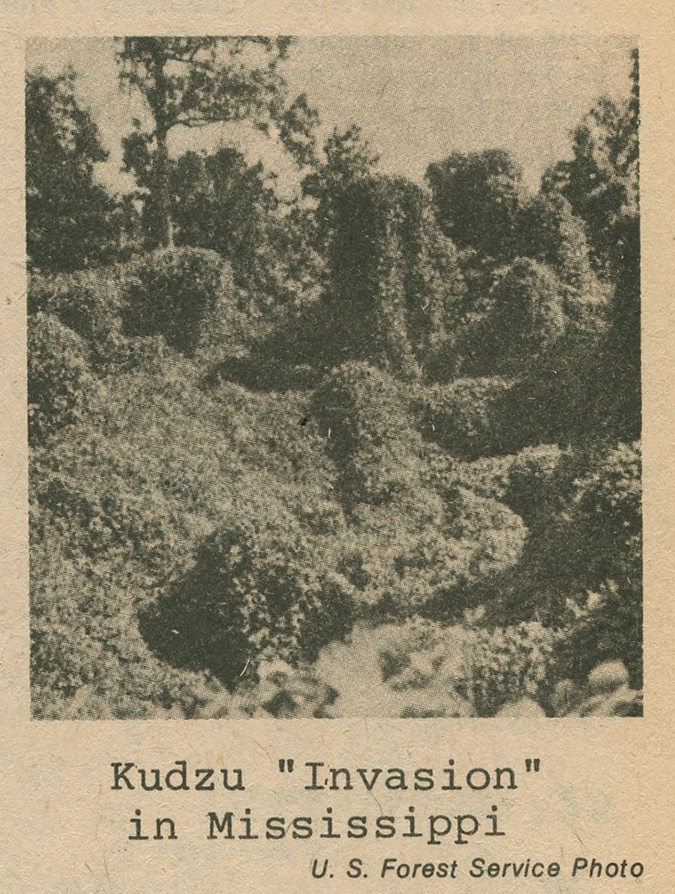What grows a mile-a-minute, is able to leap up an empty house in a single summer, and is nearly indestructible? Look! Up in the Trees! It’s kudzu!
Kudzu? That’s right. Kudzu is an exotic vine with a broad three-pointed leafing woody stem which was imported to the U.S. from Asia, according to the current issue of Ranger Rick’s Nature Magazine. And while many Southerners call it the mile-a-minute vine, it doesn’t grow quite that fast. Actually, “at most, a stem can grow about one foot per day,” says the National Wildlife Federation’s mostly publication for children.
Once kudzu starts to grow, it doesn’t want to stop. The vine has engulfed much of the South, where long growing seasons and abundant precipitation are to its liking. Now it’s spreading northward into Kentucky, Virginia and Maryland, and westward into Texas and Oklahoma.
The plant begins growing in the early Spring with its green tendrils radiating from its tap roots. It produces great quantities of foliage and, by late summer, clusters of fragrant purple flowers. Its tendrils can grow 60 feats in a season, often climbing vertical obstacles as high as 40 feet.
“Americans first saw kudzu at the Japanese exhibit during the U.S. centennial celebration in 1876,” reports Ranger Rick. “They liked the way it looked, so they began to plant the vine to shade their porches.” By the early 1900’s farmers found that Kudzu was inexpensive forage for livestock.
During the Great Depression, it was discovered that the vine’s deep roots, dense foliage, and rapid growth, along with its contribution of nitrogen to the soil, provided ground cover to stabilize road banks and rejuvenate nitrogen deficient soil. Some southerners called it the “miracle vine.”
Asians have always put Kudzu to good use. In Japan the vines are used to make cloth, baskets, paper and hay is made up of the leaves. The Chinese grind up the vines to make a popular kind of flour.
For most Americans, however, Kudzu has lost its charm. Farmers have found that as forage, it is easily overgrazed, and much of the vine is woody stem, useless as hay. It also invades pastures and crowds out crops. An estimated one million acres or more of southern farm, forest and pasture land are now covered by kudzu.
The vine isn’t popular with foresters, either, since it engulfs all vegetation in its path, killing both large trees and saplings. “Telephone companies don’t like the way it sometimes pulls down their poles with its heavy, grasping vines,” says Ranger Rick.
So kudzu’s aggressive growing behavior outweighs the positive qualities which caused many southern communities to form “kudzu clubs” and elect “kudzu queens” back in the 40’s. Now the U.S. Department of Agriculture lists the vine as a common weed.
Since the vine has spread so widely in the south, only a massive eradication using chemical herbicides would be effective. Economic and environmental costs make such a campaign unlikely.
So landowners wage their own battles against the “mile-a-minute” vine, remembering that if kudzu I on the loose, you can’t stand in one place for too long.






